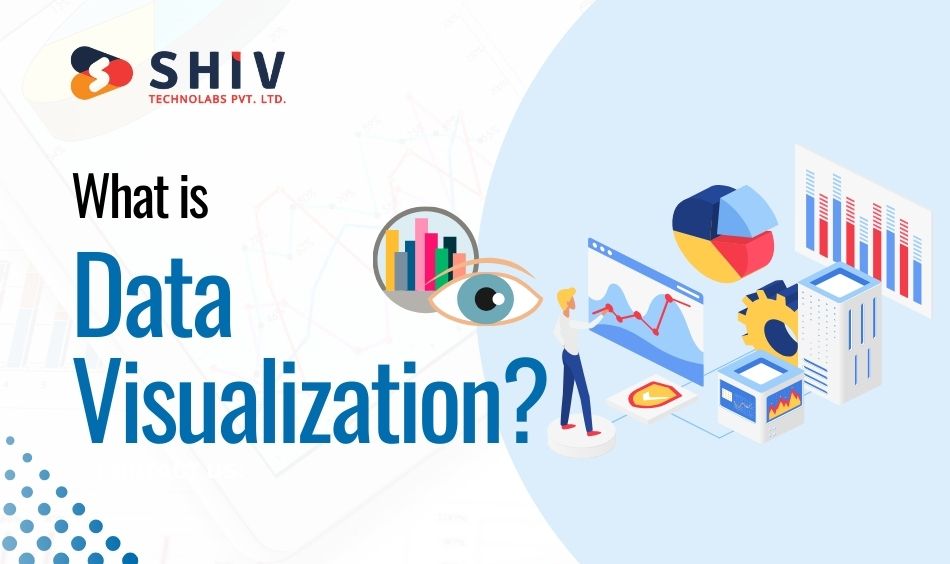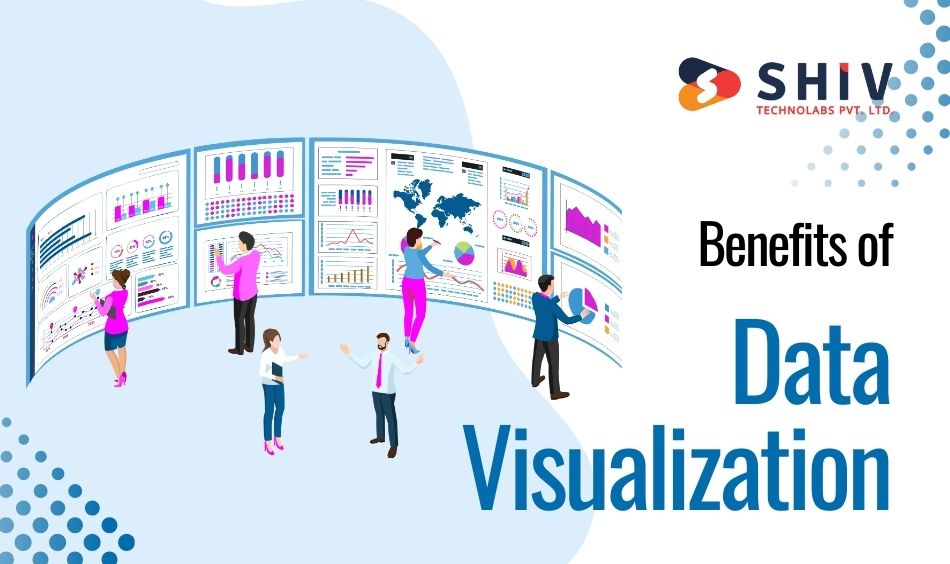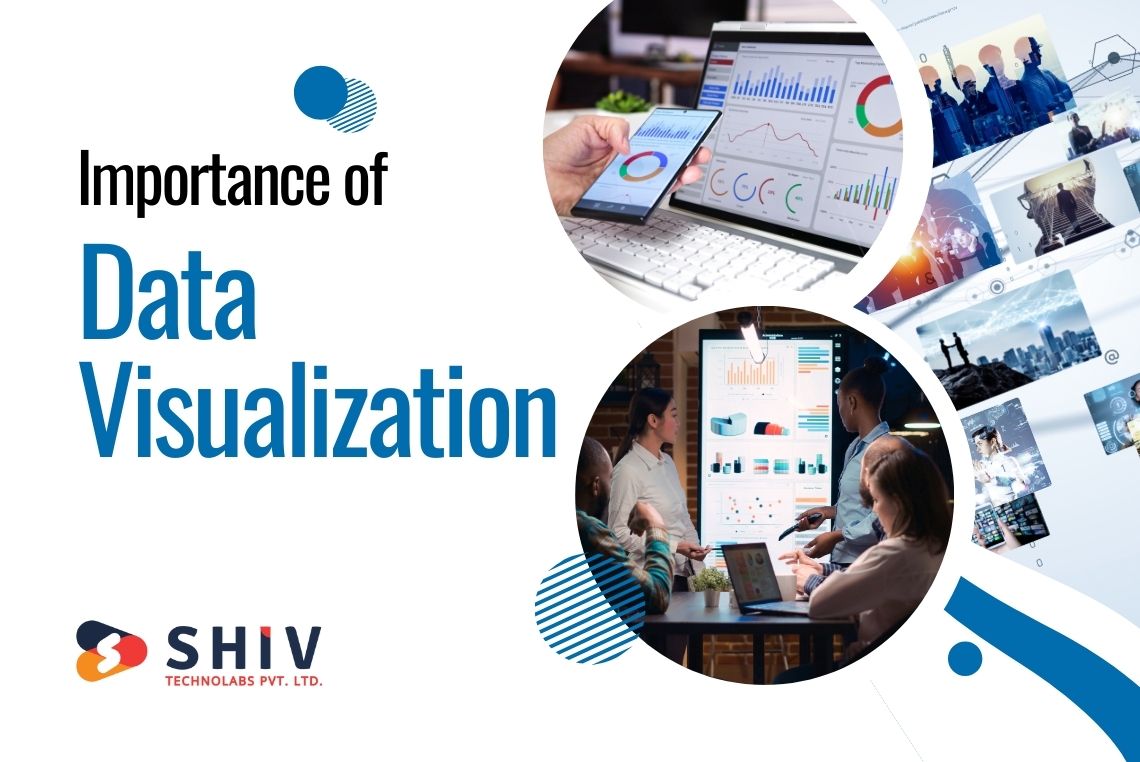Table of Contents
In today’s digital era, effectively communicating data is more important than ever. Businesses are inundated with vast amounts of data, and the challenge lies in making sense of this information in a way that is clear, insightful, and actionable. Data visualization addresses this challenge by transforming complex data sets into visual formats such as charts, graphs, and maps. These visual representations enable quicker comprehension and more effective communication of data insights.
Data visualization is not just about making data look appealing; it’s about improving understanding and driving better business decisions. By converting raw data into visual formats, businesses can uncover trends, patterns, and outliers that might otherwise go unnoticed. This capability is critical for making informed decisions, developing strategies, and communicating insights to stakeholders.
Statistics underscore the importance of data visualization in business. According to a study by MIT, the human brain processes visual information 60,000 times faster than text. This rapid processing capability makes visual data representations far more effective in conveying information than traditional text-based methods. Furthermore, a report by IBM suggests that data-driven businesses are 23 times more likely to acquire customers, six times as likely to retain those customers, and 19 times as likely to be profitable.
The significance of data visualization is further highlighted by its impact on user engagement. Research indicates that businesses using visual data discovery tools are 28% more likely to find timely information than those relying solely on managed reporting and dashboards. Additionally, companies that incorporate data visualization into their UI UX design services experience a 48% higher rate of user satisfaction. This is because well-designed visualizations not only improve understanding but also make the data interaction process more intuitive and engaging.
What is Data Visualization?

Data visualization is the graphical representation of information and data. By using visual elements like charts, graphs, and maps, data visualization tools provide an accessible way to see and understand trends, outliers, and patterns in data. These visual representations help to simplify complex data sets, making it easier to comprehend and interpret the information quickly and efficiently.
There are various forms of data visualization, including:
- Bar Charts: Ideal for comparing quantities across different categories.
- Line Graphs: Useful for showing trends over time.
- Pie Charts: Great for illustrating proportions within a whole.
- Scatter Plots: Used to show the relationship between two variables.
- Heat Maps: Highlight areas of concentration within data.
- Geographic Maps: Show data distributed across different locations.
Why is Data Visualization Important?
1) Simplifies Complex Information
One of the primary benefits of data visualization is its ability to simplify complex information. Raw data, especially in large volumes, can be overwhelming and challenging to interpret. Visualization transforms this data into a visual context, making it easier to understand and analyze.
For example, a large spreadsheet of sales data over multiple years can be difficult to interpret, but a line graph showing sales trends over the same period can quickly convey important insights.
Data visualization breaks down complex datasets into digestible visuals that reveal underlying patterns and insights. It converts abstract numbers into concrete visuals, making it easier for the human brain to process and understand. This simplification helps stakeholders grasp complex scenarios without getting lost in the details.
2) Improves Decision-Making
Effective data visualization aids in better decision-making by presenting data in a clear and concise manner. When business leaders and stakeholders can easily grasp the insights from data, they are better equipped to make informed decisions. Visual data representations can highlight key performance indicators (KPIs), identify trends, and uncover areas that need attention, thus driving strategic planning and action.
Decision-making becomes more accurate and swift when data is presented visually. Managers and executives can quickly see where the business stands, what areas are performing well, and what areas require improvement. Visualizations like dashboards consolidate critical metrics into a single view, allowing for quick, data-driven decisions.
3) Identifies Patterns and Trends
Data visualization helps in identifying patterns and trends that might not be immediately apparent in raw data. By visualizing data, businesses can detect correlations, anomalies, and trends that can inform future strategies. For instance, a heat map of customer interactions on a website can reveal which areas receive the most engagement, guiding user experience improvements.
Patterns that are hidden in spreadsheets often become clear through visual representation. Trends over time, correlations between variables, and outliers that require attention can be easily spotted. This ability to identify patterns helps businesses to anticipate market movements and respond proactively.
4) Improves Communication
Visuals are universally easier to understand than textual data, making data visualization a powerful tool for communication. Whether presenting to a team, clients, or stakeholders, visuals can convey complex information quickly and effectively. This improves the clarity of communication and ensures that everyone is on the same page, facilitating better collaboration and alignment.
Communicating data visually makes it easier to share insights with a broader audience. Whether it’s a board meeting or a client presentation, visual aids like charts and graphs can simplify complex data, making it easier to convey key messages and drive home important points.
5) Engages Audience
Interactive and visually appealing data visualizations can engage audiences more effectively than static numbers or text. Engaging visuals can capture the attention of users, encouraging them to explore the data further. For websites, this means that visitors are more likely to stay longer, interact with the content, and gain deeper insights, ultimately enhancing the overall user experience.
Interactive elements in data visualization, such as hover effects, clickable elements, and dynamic filtering, engage users and make data more interactive. This interactivity not only captures attention but also allows users to engage with the data, leading to a deeper understanding and more meaningful insights.
6) Facilitates Data Exploration
Data visualization tools often come with interactive features that allow users to explore data on their own. This interactivity empowers users to drill down into specific areas of interest, filter data, and view different perspectives. Such exploration can lead to new insights and a better understanding of the underlying data, supporting more nuanced decision-making.
With the ability to interact with data visualizations, users can explore various aspects of the data independently. They can drill down into specific details, filter by different criteria, and even generate custom views, leading to a deeper understanding and new discoveries.
7) Supports Data-Driven Culture
In a business environment, fostering a data-driven culture is essential for long-term success. Data visualization supports this by making data more accessible and understandable for everyone in the organization. When employees can easily access and interpret data, they are more likely to use it in their daily decision-making processes, promoting a culture where decisions are based on data rather than intuition.
A data-driven culture is one where decisions are made based on data rather than intuition. Data visualization promotes this culture by making data accessible to everyone in the organization, encouraging the use of data in everyday decisions and fostering a mindset that values evidence-based decision-making.
8) Improves Reporting
Reporting is an integral part of any business operation. Data visualization improves reporting by making it more dynamic and interactive. Traditional reports filled with tables and text can be difficult to interpret, but when data is presented visually, it becomes easier to identify key metrics and insights. This can improve the quality and effectiveness of reports, leading to better understanding and action.
Visual reports are more engaging and easier to understand than traditional text-based reports. By incorporating charts, graphs, and other visual elements, reports can highlight key insights and trends, making them more effective tools for communication and decision-making.
9) Drives Performance Improvement
By making performance data more transparent and accessible, data visualization can drive performance improvement across an organization. Visual tools can highlight areas where the business is excelling and where it needs to improve, allowing teams to focus their efforts on the most critical areas. This can lead to more targeted and effective performance enhancement initiatives.
Performance metrics are easier to track and improve when they are visualized. Dashboards can display real-time performance indicators, allowing teams to monitor progress and make adjustments as needed to improve outcomes.
10) Improves Transparency and Accountability
Data visualization can significantly improve transparency and accountability within an organization. When data is presented in a clear and understandable format, it becomes easier to hold teams and individuals accountable for their performance. Transparency in data presentation also builds trust among stakeholders, as they can see the facts and figures driving business decisions.
Transparent visualizations build trust within an organization by making data more accessible and understandable. This transparency helps hold teams accountable for their performance and ensures that everyone is working towards the same goals with a clear understanding of where the business stands.
Also read : Top Tips for Selecting the Right Prototyping Tool for UI/UX
Benefits of Data Visualization

- Faster Decision-Making:
Data visualization helps decision-makers grasp complex concepts quickly and recognize new patterns. By presenting information visually, businesses can significantly reduce the time it takes to understand intricate data sets. This speed is crucial in today’s fast-paced environment, where timely decisions can make the difference between success and failure. - Improved Data Analysis:
Visualization tools allow analysts to view large amounts of data in graphical formats, making it easier to detect patterns, correlations, and anomalies. This analytical capability can lead to more accurate insights and better strategic decisions. - Improved Storytelling:
Graphs, charts, and maps can tell a story more effectively than raw numbers alone. Data visualization helps to craft compelling narratives that can communicate insights clearly and persuasively. This storytelling aspect is critical for engaging stakeholders and driving the point home. - Increased Accessibility:
Visual data is easier to interpret for a broader audience, regardless of their technical expertise. By translating data into visual formats, businesses make information accessible to non-technical stakeholders, enabling more inclusive discussions and decisions. - Better Identification of Trends and Patterns:
Visualization highlights trends and patterns that might go unnoticed in text-based data. This ability to see trends at a glance can inform forecasting, planning, and strategy development. - Improved Collaboration:
When data is presented visually, it becomes a more effective communication tool. Teams can collaborate more efficiently, discussing data-driven insights and strategies with greater clarity and understanding. - Time Savings:
Visual tools can automate the creation of reports and dashboards, saving valuable time that can be redirected towards analysis and strategy development. This efficiency is particularly beneficial for businesses handling large volumes of data. - Improved Reporting:
Reporting is an integral part of any business operation. Data visualization makes reporting more dynamic and interactive. Traditional reports filled with tables and text can be difficult to interpret, but when data is presented visually, it becomes easier to identify key metrics and insights. This can improve the quality and effectiveness of reports, leading to better understanding and action. - Drives Performance Improvement:
By making performance data more transparent and accessible, data visualization can drive performance improvement across an organization. Visual tools can highlight areas where the business is excelling and where it needs to improve, allowing teams to focus their efforts on the most critical areas. This can lead to more targeted and effective performance enhancement initiatives. - Increases Transparency and Accountability:
Data visualization can increase transparency and accountability within an organization. When data is presented in a clear and understandable format, it becomes easier to hold teams and individuals accountable for their performance. Transparency in data presentation also builds trust among stakeholders, as they can see the facts and figures driving business decisions.
Data Visualization and Big Data
As businesses collect increasingly vast amounts of data, the challenge of making sense of this data grows. Big data requires tools that can process, analyze, and visualize large datasets quickly and efficiently. Data visualization is critical in the context of big data for several reasons:
- Managing Complexity:
Big data comes with immense complexity due to its volume, variety, and speed. Visualization helps to distill this complexity into comprehensible formats, allowing businesses to understand and act on their data more effectively. - Real-Time Analysis:
With the surge in data from various sources, real-time analysis has become essential. Data visualization tools can process and display real-time data, helping businesses to respond promptly to emerging trends and issues. - Integration with Advanced Analytics:
Data visualization can integrate with advanced analytics tools, such as machine learning and artificial intelligence. This integration allows businesses to visualize the outcomes of predictive models and complex algorithms, making sophisticated analysis more accessible. - Identifying Insights:
Big data can obscure key insights within its vast expanse. Visualization techniques help to uncover these insights by highlighting significant patterns, trends, and outliers that might be missed through traditional analysis methods.
Also read : Effective Use of Typography in UI Design by Experts
Who Uses Data Visualization?
1) Business Executives
Executives rely on data visualization for quick and clear insights into the health of their business. Dashboards and reports that present key metrics visually help them to monitor performance, identify issues, and make strategic decisions efficiently.
2) Data Analysts
Analysts use visualization tools to dissect complex data sets, uncover patterns, and generate insights. These tools are essential for transforming raw data into actionable information that can drive business decisions.
3) Marketing Professionals
Marketing teams use data visualization to track campaign performance, customer behavior, and market trends. Visual reports help them to assess the effectiveness of their strategies and make data-driven adjustments.
4) Financial Analysts
In finance, visualization tools are used to monitor market trends, analyze financial performance, and assess risk. By presenting financial data visually, analysts can quickly identify significant trends and make informed recommendations.
5) Operations Managers
Operations teams use data visualization to monitor supply chain performance, manage inventory, and optimize processes. Visual tools help them to identify bottlenecks and inefficiencies, enabling more effective management of operations.
6) Human Resources
HR departments use data visualization to analyze employee performance, monitor engagement levels, and manage workforce planning. Visual reports help HR professionals to communicate insights and strategies to other stakeholders.
7) Sales Teams
Sales professionals use visualization to track sales performance, monitor customer relationships, and forecast future sales. Dashboards that display sales data visually can help them to stay on top of their targets and identify opportunities for growth.
Conclusion
Data visualization is not just a tool but a strategic asset for businesses. It transforms raw data into meaningful insights, facilitating faster decision-making, improved data analysis, and compelling storytelling. By making complex data accessible and understandable, it drives better performance and collaboration across all levels of an organization. The ability to visualize big data and real-time information further amplifies its value, making it indispensable in today’s data-driven world.
From business executives to sales teams, data visualization supports a wide range of roles, enabling them to uncover trends, track performance, and make informed decisions. As businesses continue to collect and analyze vast amounts of data, the role of data visualization will only become more critical.
If you’re looking to harness the power of data visualization for your business, Shiv Technolabs is here to help. As a leading UI UX Design Company in Saudi Arabia, we specialize in creating stunning and functional data visualizations that can transform your business insights. Our team of experts combines cutting-edge technology with creative design to deliver visualization solutions that are both impactful and easy to understand. Whether you need to visualize complex data sets or improve your reporting capabilities, Shiv Technolabs has the expertise to bring your data to life. Partner with us and see how we can help you make smarter, data-driven decisions.




















